Spring 2025: Shadowbase Newsletter
Share This!
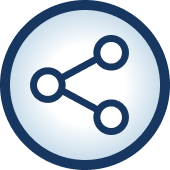 Copy link to clipboard
Copy link to clipboard Email link
Email link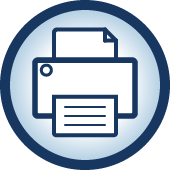 Print
Print
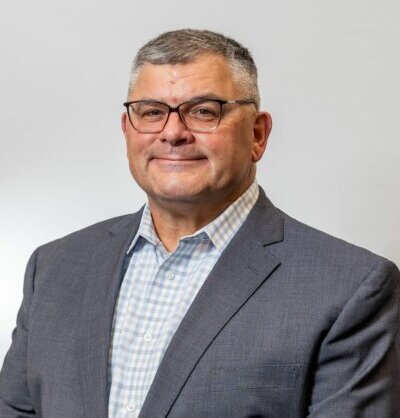
Paul Holenstein, Executive Vice President and Chief Technologist
Welcome to our Shadowbase Spring 2025 Newsletter!
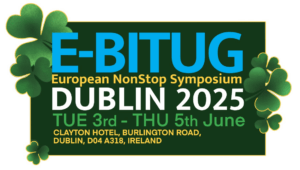
Going to eBITUG? Join us for FREE Training, Informative Sessions, and stop by our Booth to say “Hi”
The Spring season brings a positive aura of growth, fresh perspectives, and newness.
The plants are finally budding, we are starting to see the fruits of our labor in several key areas that we are excited to share with you, and the tradeshow season is keeping us busy as ever.
For those attending eBITUG, join us at our booth or one of our sessions; we always enjoy chatting at these types of events.
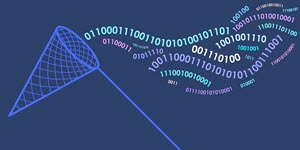 Shadowbase Zero Data Loss
Shadowbase Zero Data Loss
Shadowbase version 7.000 birthed this past year, and it contained our first official release of this patented and groundbreaking technology. As we have been explaining the value proposition and working with customers, it has come to our attention that many are not fully aware of the value proposition – what this new solution does for you and how it does it, so I tasked our Product Manager, Paden Holenstein, to provide a mini-drill down here (note – this summary is explained in more detail in the upcoming May/June issue of The Connection).
The key point to remember about replication technology for business continuity is that all of the NonStop data replication products available today use an asynchronous data replication engine to move data from the source to the target environment (set RDF/ZLT aside as it is a Mature product).
- This means that the application creating the data changes and the replication engine that moves them to the target are not directly synchronized with each other.
- There is generally a delay, called Replication Latency, between the time the changes are made at the source and when they are taken off-platform and either safe-stored or applied into the target.
- The length of this delay represents the amount of data that your firm has at risk of loss should the source system suddenly disappear and be inaccessible.
 Some examples will help drive the point home.
Some examples will help drive the point home.
- What is your replication latency (most replication engines will report that information via a “STATUS” command)?
- If you are unsure, test it.
- What is your average Transactions per Second (TPS) rate for your application? (TMFCOM will tell you this.)
- As an example, if your replication latency is 5 seconds and your TPS rate is 1,000, then you have 5*1000 or 5,000 transactions worth of data at risk of loss should the source system fail and become inaccessible.
- What if your replication latency is 15 seconds and your TPS rate is 5,000 TPS? Then you can lose up to 15*5,000 or 75,000 transactions worth of data.
- It obviously gets worse as the replication latency or TPS rate increases, and certainly when the network slows down.
 Should you care?
Should you care?
Does this matter to you and your business? Maybe, and maybe not.
- For ATM transactions, the loss of this data may be acceptable because the business feels the average monetary value of a transaction is low – just a cost of doing business.
- How about losing that many POS transactions? Again, maybe the amount of potential loss is still below the institution’s threshold.
- Besides, can’t you recover it all from other sources later on, such as ATM logs or POS device logs? Most likely you can…but more on that aspect below.
- How about online banking transactions? These can certainly start to add up…
- What about money-center bank funds transfers for inter-bank loans to meet cash margins?
- In some cases, losing any data can affect the market, for example losing security pricing as the prices sequence affects the current price. Losing this much and type of data is considered completely unacceptable to the business.
Just as beauty is often in the eye of the beholder, so is data loss for the organization.
Certainly, for some applications, the value of the data is low, and some data loss (or ‘temporary’ inaccessibility) can be tolerated, but what about mission-critical applications that process high-value transactions? And what if those transactions are not monetary in value, but represent critical healthcare such as medicine dosing information that can put lives at risk? Can you afford to lose them then?
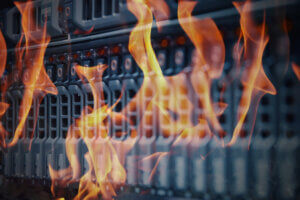
When that data is put at risk of loss, it is critical to ask your business: what amount of loss can the business tolerate?
The simple fact is that most customers have never experienced a 9/11 style outage.
Most have never completely, utterly, and totally lost their source system and data. The vast majority of times, when the source fails or becomes inaccessible, it is often eventually recoverable and the data is usually still intact.
But what about those cases when it is not recoverable? Where do you go to get that data then?
It is important to understand that data availability is key for most mission-critical applications, certainly those in the financial and health care, manufacturing, and other sectors.
When that data is put at risk of loss, it is critical to ask: what amount of loss can our business tolerate?
When a source system fails and becomes inaccessible, the data represented by the replication latency will be gone.
It may be possible to eventually recover all or some of it, but:
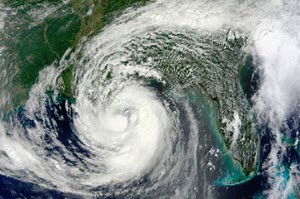 How long will that take?
How long will that take?- Can you effectively start up application processing again not having the missing data?
- How much chaos, uncertainty, and botched decisions will come from not having that data?
- Will it result in regulatory fines, loss of brand reputation, customer and market unrest, or even loss of life?
It is clear that the Recovery Point Objective (RPO) profile of an application matters to the business: asynchronous replication puts data at the risk of loss, whereas synchronous replication does not put your data at risk of loss.
But few understand that these technologies affect the application’s Recovery Time Objective (RTO) profile: how fast the application can come back online after a source failure occurs.
Why? Because some applications cannot (or should not) go live without full, correct, consistent, and complete information after a catastrophic failure.
If this describes one of your business’s concerns, we have the right solution for you. Shadowbase Zero Data Loss is designed to address these concerns. Please Contact Us to learn more.*
(*Note: There is an interesting case of applications that strive to address the data loss issue by sending copies of their requests, and/or the results of processing those requests, to multiple locations as part of the overall application processing cycle. Each of these approaches has interesting attributes that may assist in some recovery scenarios. If this applies to you, contact Gravic to discuss these architectures further.)
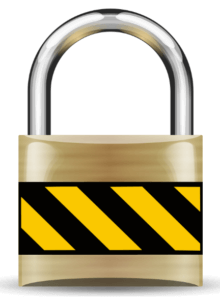
New Shadowbase DoLockStep Feature
In a similar vein, we are also working on an exciting new feature called Shadowbase DoLockStep. This new feature will allow the customer’s application to coordinate its processing with the Shadowbase asynchronous data replication engine to ensure that data is delivered and safe-stored at the target.
This is useful for a variety of use cases, including:
- Processing high-value transactions and needing to know that they have been delivered and safe-stored at the target before entering a critical processing function at the source.
- Another set of use cases is to verify all data has been delivered to the target before performing a planned failover to the target as part of a Shadowbase Zero Downtime Migration.
- A third is to know that all important data has been delivered to the target, for example, before performing a backup at the target.
The new Shadowbase DoLockStep feature is being designed as a direct replacement to those customers using the RDF DOLOCKSTEP feature. Contact Us for an Early Code Drop version for testing purposes.
Do you use IBM MQ in your NonStop environment?
We recently worked with the IBM MQ team to create a best practices guide for using HPE Shadowbase to protect your MQ environment in a NonStop business continuity environment.
Please Contact Us to receive additional information.
Migrations
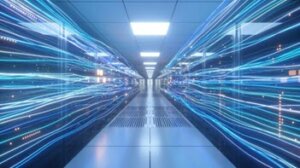
We are in a season of migrations, and a lot of our attention has been focused on helping customers.
We are in a season of migrations, and a lot of our attention has been focused on helping customers quickly, efficiently, and correctly migrate from their existing solutions to an HPE Shadowbase solution, usually with no application downtime.
Customer motivation behind the migrations include a competitor’s overpriced license renewal costs, poor support, missing product features, and lack of NonStop platform commitment and robust roadmap. We are always available to discuss your situation and explain how we can help. We are especially pleased and excited when we can assist a customer to make their entire NonStop environment, applications and database included, more efficient and run faster after the upgrade to HPE Shadowbase and an audited database. If any of this describes your concerns with your current replication vendor, feel free to reach out to us to discuss how we can help.
We thank you for your interest in the Shadowbase line of data replication and data integration products. We look forward to meeting up with you at one of the upcoming events during this busy trade show season, or feel free to reach out to me and the team at any time to discuss your needs.
The new features added to HPE Shadowbase for Other Servers 6.810 are briefly described below:
- Array-based target database processing for high-latency database connections. This enhanced form of replication is particularly important when integrating your data into Cloud platforms.
- Improved latency reporting. This can be enabled for any object that processes replicated data to view or alarm when latency thresholds are met or violated.
- Enhanced DOC reading/writing statistics. This can be enabled for any object that writes to or reads from a Shadowbase DOC object and is extremely useful when tuning high-volume replication environments.
- Other miscellaneous fixes and usability enhancements.
IMPORTANT:
- A new license file is required to install and run HPE Shadowbase for Other Servers software version 6.700 or newer. This is due to a change in the format of the license file, current license terms are still valid and remain in force. Contact the HPE License Manager to request a new license file. DO NOT INSTALL HPE Shadowbase for Other Servers software version 6.700 or newer until a new license file has been obtained.
Obtaining HPE Shadowbase for Other Servers 6.810
Shadowbase is built by Gravic, and globally sold and supported by HPE. HPE Shadowbase for Other Servers 6.810 is an Independent Product (IP) and hence is shipped, upon ordering, on its own DVD.
Product Management Updates
Keith Evans’ Retirement
This past December, Keith Evans, our former Product Manager, retired. So far, we’ve heard Keith is doing quite a bit of star gazing exploring new worlds, traveling, and enjoying retirement. While there is much still to learn, I’m excited to be undertaking this Product Manager role from my sensei (the Jedi-master).
My NonStop Journey with HPE Shadowbase
Over the years, I’ve been attending HPE NonStop user groups and shows all over the world. In case we haven’t met yet, the March/April issue of The Connection includes My NonStop Journey with HPE Shadowbase, describing:
- My journey into the HPE NonStop world
- How my perception of enterprise IT transformed over the past decade
- Plus, two interesting customer stories that are worth reading
 The Importance of Audited Transactional Protection
The Importance of Audited Transactional Protection
In Using AutoTMF, TMF, and RDF to Enable Disaster Recovery Solutions for BASE24™ Systems, the “Phil Nye report,” Philip J. Nye of Cardlink Consultants Ltd illustrates:
- Detailed graphs on the performance benefits of using TMF
- How to enable this improved performance and Disaster Recovery for BASE24 applications using standard HPE NonStop Products
- How to automatically add support for TMF to BASE24 applications using AutoTMF
This White Paper contains metrics that are based on a real customer’s system and is one that you won’t want to miss, especially if you are not using TMF yet to protect your database and make your system more efficient.
Going to eBITUG? Join us for a FREE training session on mastering DORA Immutability Requirements and HPE Shadowbase Sessions 
- Tuesday — Mastering DORA Immutability Compliance for HPE NonStop Systems: A Comprehensive Guide – Track Two from 09:00 – 11:30 at Ulster
- ETI-Net and Gravic’s Senior Solution Architects will dive deep into the new DORA Immutability requirements
- ETI-NET BackBox and Gravic ShadowBase Q Files (which can recover a database) can be made immutable
- Refreshments and lunch will be provided
- Spaces are limited: sign up today by adding this session to your Whova agenda!
- Wednesday — HPE Shadowbase Solutions for High Availability and Digital Resilience from 12:05 – 12:45 at Lansdowne
- Join Kenneth Scudder, Gravic, Inc., Vice President of Global Business Development and Sales, during this Plenary session to learn about:
- Key innovation
- Expanded data streaming interfaces
- Improved data validation and data corruption remediation capabilities
- New Digital Resilience solutions
- New tools and utilities for easier NonStop data management
- The HPE Shadowbase Roadmap, including Zero Data Loss, Heterogeneous Compare, and more
- Thursday — HPE Shadowbase Digital Resilience for Ransomware Protection and Data Recovery from 15:05 – 15:35 at Lansdowne
- Join Paden Holenstein, Gravic, Inc., Product Manager, during this breakout session to learn about:
- The HPE Digital Resilience Framework, plus the solution building blocks that help protect and recover mission-critical HPE NonStop server data
- New Business Continuity architectures and high availability capabilities specifically designed to address cybersecurity threats
- Advanced HPE Shadowbase functionality for immutable storage, air-gapped isolation, data validation, data quarantining, and database roll-forward and rollback
- An architectural demo illustrating an air-gapped, rapid recovery NonStop system
HPE Shadowbase Presents on High Availability and Data Resilience at OZTUG25
- Paden Holenstein and Ken Scudder presented on HPE Shadowbase, where they laid out an exciting roadmap for HPE Shadowbase innovations including Digital Resilience, Zero Data Loss, and Heterogeneous Compare.
- Key themes were security and data protection with emphasis on addressing the driving factors of new data protection and recovery architectures (air-gapped systems, bare-metal recovery, immutable storage, and data vaults) such as ransomware attacks and new government initiatives.
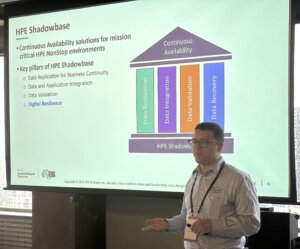
Paden Holenstein presenting at OZTUG.
Gravic Presents HPE NonStop Virtual Webinar with NuWave and TCM
- NuWave Technologies, TCM Solutions, and Gravic unveiled our latest innovations, cutting-edge solutions, and exciting new product releases as well as explored technologies designed to streamline your operations, boost your efficiency, and drive your business growth.
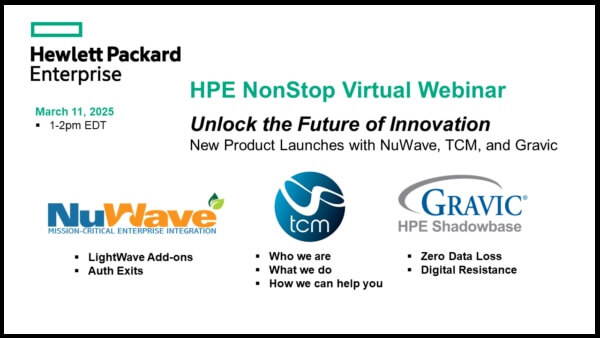
We enjoyed participating in the first virtual HPE NonStop Virtual Webinar!
HPE Shadowbase Presents on High Availability and Digital Resilience at ChileTUG
- Kenneth Scudder and María Luisa Mendoza presented at the inaugural ChileTUG Nonstop user group event held in Santiago.
- They covered the need for new data protection and recovery architectures, including air-gapped systems, bare-metal recovery, immutable storage, and data vaults to enable rapid data recovery with transactional consistency to a trusted state driven by ransomware attacks and new government initiatives.
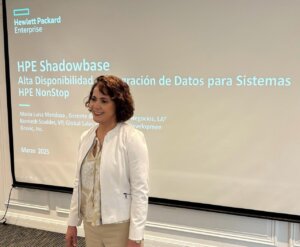
Maria Luisa Mendoza presenting on HPE Shadowbase at ChileTUG 2025.
Gravic Presents on HPE Shadowbase Digital Resilience at SunTUG
- Paden Holenstein discussed ransomware attacks and new government initiatives, such as DORA, the driving factor in the need for new data protection and recovery architectures.
- After presenting on these evolving requirements, key innovations and investments in HPE Shadowbase, including Zero Data Loss and Heterogeneous Compare were reviewed.
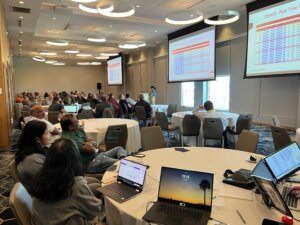
There are always new things to learn at SunTUG.
HPE Shadowbase Presents on High Availability and Digital Resilience at MexTUG
- Kenneth Scudder and María Luisa Mendoza presented at MexTUG in Mexico City.
- Customers are requesting new data protection and data recovery architectures due to the driving factors of ransomware attacks and new government initiatives.
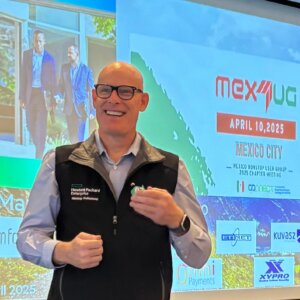
Ken Scudder presents on HPE Shadowbase at MexTUG
Gravic Presents on HPE Shadowbase Digital Resilience at N2TUG
- N2TUG was a well-attended event with excellent opportunities for networking and conversation with customers and other vendors! It was wonderful to see so many familiar and new faces at the show.
- Paden Holenstein provided an HPE Shadowbase overview and an update on Gravic’s developing Data Recovery solution for Digital Resilience as well as reviewed key innovations and investments in HPE Shadowbase, including Zero Data Loss and Heterogeneous Compare, and recent customer implementations and a product update.
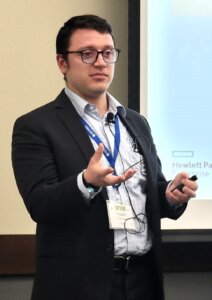
Paden Holenstein, HPE Shadowbase Product Manager, presents at N2TUG.
Gravic Presents on HPE Shadowbase Digital Resilience at NYTUG
- NYTUG 2025 was a fantastic event filled with insightful presentations and great networking opportunities! It was a pleasure to reconnect with longtime customers and meet new faces in Berkeley Heights, NJ.
- Gravic presented on HPE Shadowbase Digital Resilience for HPE NonStop Systems, contributing to a day focused on key industry topics such as Digital Resilience, Data Security, Compliance, and Artificial Intelligence.
- Attendees were highly engaged, with lively discussions continuing into the evening.

Paden Holenstein speaking to our fellow vendors and customers at NYTUG.
Gravic Presents on HPE Shadowbase Digital Resilience at CTUG
- It was a pleasure to reconnect with longtime customers and discuss how we are doing, what their plans are, and how we can help;
- We were quite pleased with the engaging discussions we had with a number of potential customers;
- Many enthusiastically approached our booth and expressed how meaningful it was to reunite with familiar faces and industry peers at the post-show reception.

Paul Holenstein presenting on the growing dangers of Ransomware.
Visit our Product Delivery and Support Web Pages for Answers to Your Questions
If you ever have any questions about various HPE Shadowbase platform and database versions, then please see our web page: Supported Databases and Platforms.
This page (and the link to the spreadsheet from this page) contains information such as:
- What platforms or databases are supported by Shadowbase
- What specific platform/database versions are supported by each Shadowbase release
- How long each individual Shadowbase version is under active maintenance, and when it transitions to mature, limited, and obsolete status
- Which options exists for Shadowbase running as a source and/or as a target
Note, another helpful web page is: HPE* Shadowbase Software Product Releases (SPRs) Available from HPE Scout and DVDs (SOFTDOCS)
The page is organized by the HPE Shadowbase part number (T#), which correlates to its respective operating system.
Shadowbase Deployment Training and Migration Projects
These past six months have been very busy; we have: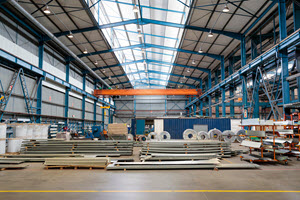
- Helped a large manufacturer implement Shadowbase for Business Continuity replication between its NonStop systems
- Finished a large integration from NonStop to Oracle for a large retail company
- Proved that Shadowbase can replace a financial firm’s existing replication solution for not only one, but ALL of its NonStop applications!
- Helped an existing customer implement changes to the application with no impact to its application’s service availability
- We also will help this customer with a system migration this summer
- Helped partners implement and test Shadowbase to protect IBM MQ environments for Disaster Recovery
- Migrated an existing customer to three new NonStop systems with no application downtime!
- Continued to work with a customer on a Proof of Concept to replace an existing replication solution
- This customer will be using several exciting new features in Shadowbase!
- Provided remote training and workshops to HPE and partners in the APAC region
- Provided a workshop on Compare to a European financial institution
- Worked with HPE Education to enhance Shadowbase training with hands-on workshops
Contact us to get in touch with Support; we would be happy to answer any questions and provide additional detail regarding these projects.
Hewlett Packard Enterprise globally sells and supports Shadowbase solutions under the name HPE Shadowbase 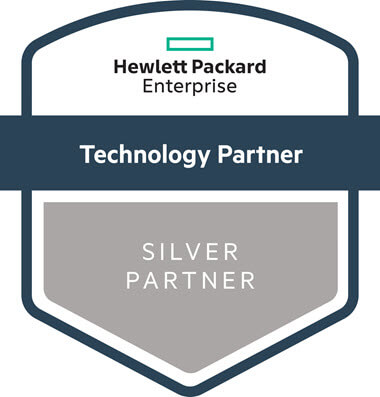
HPE chose Shadowbase as its strategic, go-forward, data replication solution for NonStop and Other Server environments.
For more information, please contact your local HPE account representative or visit our website. Also, please view our latest Shadowbase product solution videos: Vimeo.com/ShadowbaseSoftware. For Shadowbase support, HPE Shadowbase customers should contact the GNSC; otherwise, please use your normal support contact information supplied in your customer agreement.
We look forward to ongoing success in 2025, as we continue to help customers achieve their Business Continuity, Data Integration, and Digital Resilience objectives, and providing even more exciting features that will be discussed in our next newsletter. Until then, we deeply appreciate your use of our products and thank you for your continued interest in HPE Shadowbase software.
Always feel free to reach out to me and the Shadowbase Team to discuss whatever is on your mind.
With kind regards,
Paul J. Holenstein
Executive Vice President
Gravic, Inc.
Subscribe to Connect emails to stay informed regarding upcoming user group meetings and HPE events throughout the year.
Please reference our Newsletter Disclaimer.


 Shadowbase Zero Data Loss
Shadowbase Zero Data Loss Some examples will help drive the point home.
Some examples will help drive the point home. Should you care?
Should you care? 
 How long will that take?
How long will that take?

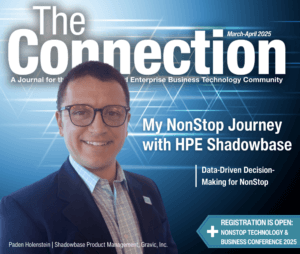
 The Importance of Audited Transactional Protection
The Importance of Audited Transactional Protection










